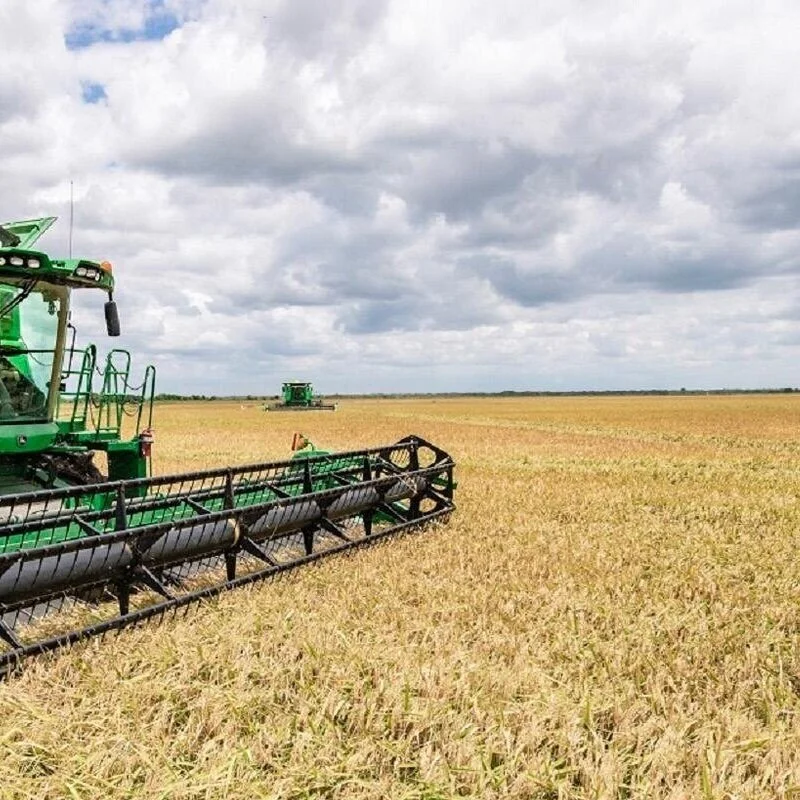Today, Ralston Family Farms announced a 9-metric ton (MT) commercial sale of long grain rice to China that arrived in July, the first U.S. rice shipment grown and sold there out of the mid-south. The shipment is just the second commercial U.S. shipment to be sold and unloaded in China since a phytosanitary protocol was signed in 2017. The first was 20 MT of California medium grain, shipped by Archer Daniels Midland (ADM) Rice last fall.
Read MoreThe use of certified seed, equipment sanitation and crop rotation are among the tools California growers are using to curb instances of weedy rice, university crop advisors say.
Most growers are scouting at least monthly for weedy rice and finding that other weed species are more prevalent even for those who have it, according to a University of California survey.
Read MoreThis week, the House Agriculture Committee passed its portion of the $3.5 trillion reconciliation package, including more than $94 billion in new spending related to agriculture.
For Louisiana, there is a glaring hole in that spending plan as it is lacking supplemental disaster assistance for farmers and ranchers after Hurricane Ida ravaged the state last month.
Read MoreRice production in southwest Louisiana began in earnest during the early 1880s. The rice industry rapidly increased in the region in the years that followed. From 1896 to 1909, rice acreage in southwest Louisiana expanded from 148,000 to 370,000 acres with average rice yields ranging from a low of 855 pounds per acre in 1896 to a high of 1,642 pounds per acre in 1908. Rice industry leaders in the region recognized the importance of rice to southwest Louisiana and began to take measures to ensure the sustainability of the rice industry. The leaders knew that if the rice industry was to maintain a foothold in the region, experimentation and incorporation of improved rice cultivars and agriculture practices would be essential.
Read MoreSevere outbreaks of rice kernel smut, caused by the Tilletia horrida fungus, occurred across Texas. Smutted rice, which is characterized by replacement of rice grains with a black, sooth mass of smut spores, was observed in each of the rice fields surveyed in early August. Kernel smut widely occurred in the east and west areas of Houston, two major rice production areas in Texas.
Read MoreMore than thirty years ago, an act of Congress designated September as National Rice Month (NRM), and ever since the U.S. rice industry has capitalized on the annual month-long celebration to raise awareness of U.S.-grown rice and recognize the contributions the U.S. rice industry makes to America’s economy.
Read MoreThey are more than halfway through the Louisiana rice harvest, and many producers are pleased with the results. Less-than-ideal growing conditions throughout the season had expectations low, but yields have been better than anticipated. LSU AgCenter correspondent Craig Gautreaux has the story from southwest Louisiana.
Read MoreA pandemic has restricted many things, but for the Louisiana Farm Bureau Federation, it has limited our ability to bring our members directly to their elected officials, particularly those serving in Washington D.C.
Also, with four out of the six House of Representative staffers of Louisiana’s delegation being new to their jobs, we thought it was the perfect time to bring these important individuals to the farm.
Read MoreLast week, freshman Representative Julia Letlow (R-LA), who represents Louisiana’s 5th District, toured the area to meet with the state’s rice industry leaders.
Letlow and her staff started the day in Lake Charles where they met with Mayor Nik Hunter for an update on the progress of recovery efforts there in the wake of last year’s Hurricanes Laura and Delta.
Read MoreThe Entomology Society of America recently recognized a handful of scientists, educators and students who have distinguished themselves through their contributions to entomology.
Among those was Dr. Blake Wilson of the Louisiana State University AgCenter, who received received the ECP Extension Award. It is given to a student transition or early professional who excels in entomological Extension.
Read MoreThe COVID-19 pandemic created a spike in global rice prices in the second quarter of 2020, according to a new University of Arkansas System Division of Agriculture report. Since then, rice prices have remained higher than expected despite ample rice stocks and a record 2020 global rice production.
“Most commodity prices went down during the pandemic because of lower demand,” said Alvaro Durand-Morat, assistant professor of agricultural economics and agribusiness for the Arkansas Agricultural Experiment Station, the Division of Agriculture’s research arm. “But rice went the other way.”
Read MoreIf you’re thinking about how to pay for college next year -- Think Rice -- because the National Rice Month (NRM) Scholarship video contest is here. And it’s easy to participate!
Open to graduating high school students from Arkansas, California, Louisiana, Mississippi, Missouri, or Texas, the contest asks students to create a video that in three minutes or less, shines a light on this versatile, tasty, home-grown grain. “Educate, entertain, and tell us why you think rice is special – to you, to your state, or to the world,” says the contest website, ReelRiceContest.com.
Read MoreThis report contains the results from the 2021 August On Farm and Off Farm Rice Stocks surveys. These data are also posted on our web site at https://www.nass.usda.gov. Thanks to all who responded to this survey
Read MoreThe most recent U.S. Department of Agriculture’s weekly export sales report brought in the first rice trade figures of the 2021-22 marketing year and closed out what felt like a tumultuous trade year for the industry.
As of August 5, there were already 517,000 metric tons (MT) of outstanding sales recorded for this year, some of which were rolled over from the prior marketing year, but already nearly 200,000 MT ahead of where sales were at the same time one year ago.
Read MoreThe 84th International Rice Festival will recognize Phillip Lamartiniere as the 2021 Farmer of the Year. Phillip Lamartiniere was born, raised and currently resides in the small community of Fifth Ward, located seven miles west of Marksville. His parents were Louis J. Lamartiniere and Loretta Bordelon Lamartiniere. Phillip is the third of five children consisting of three sisters and one brother. He is a graduate of Fifth Ward High School and attended LSU-Alexandria for two years in Agri Business. He is married to Collier Lamartiniere from Natchitoches Parish. They have three children, Eric (45), Seth (38) and Brandon (34), whom all have successful careers outside of agriculture. Phillip and his wife, Janis, are faithful and active members of Our Lady of Lourdes Catholic Church in Fifth Ward.
Read More













